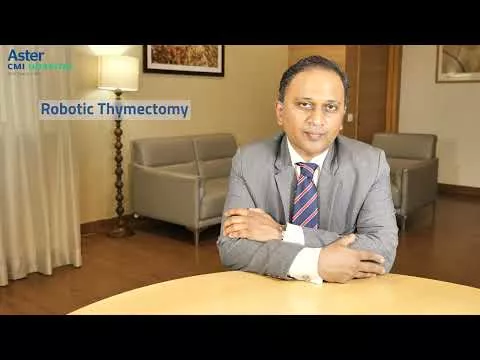Robotic cardiac surgery involves performing heart surgery through tiny cuts on the patients chest. These tiny cuts or “incisions” are then used to introduce small instruments and robot-controlled tools which are controlled by the heart surgeons sitting at a console . Current generations of robots are useful to perform valve surgery, heart defect repair - hole in the heart (atrial septal defect) , cardiac tissue ablation and cardiac tumour removal (atrial myxoma).
Who performs the robotic surgery, the robot or the surgeon?
In the operating room, there will be two surgeons, one controlling the robot and its movements via the console and the other directly next to the patient. In addition there will be other members of the cardiac team who are routinely involved in the conduct of a regular heart surgery who take part in the procedure.
The robot acts as an extension of the surgeons during robotic surgery, allowing them to work through small cuts or ports (between 2 and 2.5 centimetres). The ports accommodate tiny instruments that are attached to robotic "arms". One of these arms is equipped with a 3 D camera that sends images to a video monitor and console to assist the surgeons and others involved in the surgery.
The three dimensional vision combined with the tiny robotic instruments gives the surgeon much more precision and allows them to work in tight spaces.
What are the benefits of robotic surgery?
The precision, dexterity and manoeuvrability afforded by the robot is one of robotic heart surgery's most visible and unparalleled benefits.
Compared to a lengthy chest incision, it is significantly smaller.
Many patients can resume normal activities, such as returning to work and carrying out daily activities, within a few weeks of surgery because recovery is much quicker.
Am I a candidate for robotic heart surgery?
Currently robotic surgery is ideally suited for the following patients:
- A patient with a leaky mitral valve ( Mitral Regurgitation) - the visualisation provided ensures an optimal repair with superior outcomes compared to conventional surgery or MICS.
- Patients with a mitral valve that needs to be replaced - Mitral Stenosis
- A patient with a congenital heart defect - Atrial Septal Defect (ASD)
- Those with a heart tumour - Atrial Myxoma
- Patients suffering from heart rhythm disorders - Atrial fibrillation
Aftercare
After the procedure, the patient is transferred to the recovery room for the necessary post surgical monitoring . A brief hospital stay follows, which is less time than is required after a conventional heart operation. Once the pain and nausea has subsided, and the lab results are normal, the patient will be free to return home.
What are the risks of robotic cardiac surgery?
According to the best cardiac surgeon in bangalore, one of the primary advantages of robotic cardiac surgery is that it is less invasive than open-heart surgery. The surgeon does not need to cut through the breastbone to open your chest. This eliminates many complications associated with conventional open-heart surgery like infection of the breast bone and excessive bleeding.
Anaesthesia is still required for robotic cardiac surgery, and there are risks involved with all heart surgeries, such as:
- A stroke
- A heart attack
Other risks may exist depending on your specific medical condition. Before undergoing any procedure, discuss your concerns with our cardiac surgical team and learn about the treatment options.
What should I look for when contemplating Robotic Heart Surgery?
Robotic heart surgery is a “TEAM EFFORT”. The surgery is like a well conducted orchestra where the surgeon at the console harmoniously works with the other surgeons and assistants at the patients side and co-ordinates the surgery. In addition there is the anesthesia team which closely monitors the patient and performs an echocardiogram (ECHO) after the procedure to asses the outcome, the perfusion team which runs the heart-lung machine, the nurses, scrub techs and allied professionals which are involved.
Meet the entire surgical team at our hospital before the conduct of the procedure.
FAQs:
1. What is the cost of robotic heart surgery?
In India, the cost of robotic surgery ranges from Rs. 4,50,000 to Rs. 6,75,000
2. How safe is robotic surgery?
Robotic surgery is considered safe by experts because there is a lower chance of infection and other postoperative complications
3. What is the success rate of robotic surgery?
According to data, robotic surgery success rates range from 94% to 100%.
4. How long does robotic surgery take?
Under general anaesthesia, most procedures last between three and five hour.











